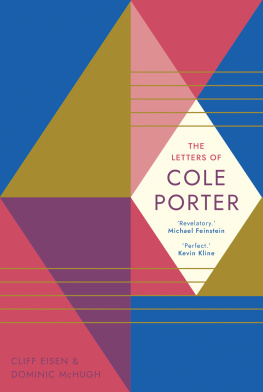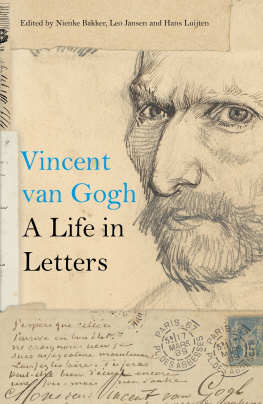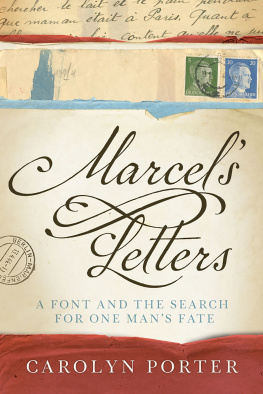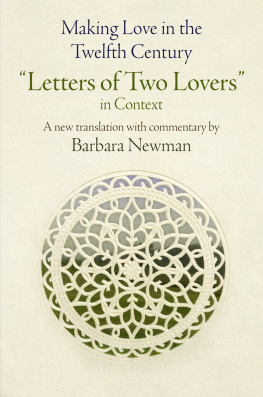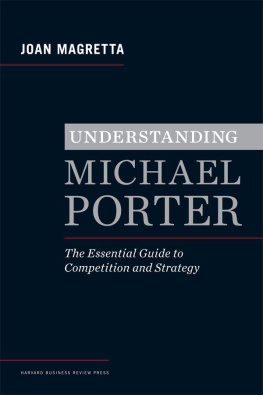THE LETTERS OF COLE PORTER
Further praise for The Letters of Cole Porter:
An absolute must for any fan of the golden age, musical theatre or the incredible Porter himself. Matthew Shaftel, editor of A Cole Porter Companion
Well, did you evah! Cole Porters letters are full not just of delightful gossip but of the detail of working on Broadway and in Hollywood during the golden age of the American musical. What a swell party it is! or at least was for Porter moving through high society across several continents. His words read as gloriously as his music sounds. Tim Carter, author of Oklahoma! The Making of an American Musical
These letters offer fascinating glimpses into some previously unseen corners of the personal and creative lives of one of Americas greatest songwriters. Eisen and McHugh provide a gilded frame for the source material in the form of expert glosses and annotations. The result is a new kind of Cole Porter biography. Jeffrey Magee, author of Irving Berlins American Musical Theater

Copyright 2019 Cliff Eisen and Dominic McHugh
All rights reserved. This book may not be reproduced in whole or in part, in any form (beyond that copying permitted by Sections 107 and 108 of the U.S. Copyright Law and except by reviewers for the public press) without written permission from the publishers.
For information about this and other Yale University Press publications, please contact:
U.S. Office:
Europe Office:
Set in Minion Pro by IDSUK (DataConnection) Ltd
Printed in Great Britain by Gomer Press Ltd, Llandysul, Ceredigion, Wales
Library of Congress Control Number: 2019941063
ISBN 978-0-300-21927-2
A catalogue record for this book is available from the British Library.
10 9 8 7 6 5 4 3 2 1

CONTENTS

PLATES

PREFACE
Cole Porters status as one of the most prolific, enduring and successful American songwriters of the twentieth century, as well as the cultural associations of his extravagant lifestyle and elite social circle, make him a compelling subject for a book focusing on his letters to his friends, family and collaborators, not least because Porters life and works remain comparatively unexamined. By and large, the closer details of his activities and personality have been overlooked in favour of broad biographical tropes that were established during his lifetime and have been repeated without much refinement or challenge. This is true of even the best authorized and unauthorized biographies: Richard Hublers The Cole Porter Story, as Told to Richard G. Hubler (Cleveland, 1965); George Eellss The Life that Late He Led: A Biography of Cole Porter (New York, 1967); Robert Kimball and Brendan Gills Cole (New York, 1971); Charles Schwartzs Cole Porter: A Biography (New York, 1977); William McBriens Cole Porter: A Definitive Biography (New York, 1998); and Stephen Citrons Noel & Cole: The Sophisticates (New York, 1993).
Accordingly, in assembling this volume of Cole Porters correspondence we had specific aims and priorities as well as several challenges. Our goal was not to write a biography but rather to assemble as much of Porters extant correspondence as possible, alongside complementary primary sources such as diaries and newspaper articles, and to place the letters in context through a succinct connecting commentary. Fans of Porters famously witty and wordy songs may be struck by how brief and to the point many of his letters are, and this quality dictated our decision to explain the significance of much of the material. Additionally, part of the challenge was the requirement to guide the reader through the disparate threads of Porters letters, including business letters to his publishers (such as Max Dreyfus at Chappell), accountant (his cousin Harvey), secretaries (among them Margaret Moore and Madeline P. Smith) and attorneys (John Wharton and Robert Montgomery); working letters about his songs to the book writers of his shows (especially Bella Spewack and Abe Burrows) and arranger (Albert Sirmay); and miscellaneous letters to his fans, actors starring in his musicals (such as Clifton Webb and Ethel Merman), his lovers and his friends. For each of these, but particularly the last two categories, Porter adopts a slightly different tone or diction depending on who he is writing to. For example, his tone of voice in writing to his long-term gay male friends Monty Woolley and Charles Green Shaw is often noticeably exuberant, flirtatious and flamboyant, whereas in writing to his female friends such as Jean Howard he usually adopts a gently charming and affectionate manner. While most of his love letters have apparently not survived, there is a special character to those that have: a particular sincerity and anguish to the sequence of notes (written in French) from Porter to the dancer Boris Kochno in the 1920s, and an almost paternal concern in the letters written to the marine Nelson Barclift in the 1940s.
Even before considering the implications of the facts and details contained in the letters, these nuances speak volumes about Porters character and offer both the scholar and the general reader new insights into an important historical figure who is at once familiar and yet curiously distant. Of course, the details are where the true surprises lie. For example, we learn that Porter famously born into a wealthy family and married to a rich divorcee spent most of his adult life worrying about money, so much so that he often had to weigh up whether the consequently enormous rise in taxes would make it financially crippling to take on certain musical projects. Thus while we might have expected the affluent Porter to have written his songs and musicals without needing the money, in truth the opposite was the case: he sometimes sacrificed his financial stability for his art. The letters also illuminate his relationship with his wife, Linda: he describes falling in love with her during their early acquaintance, and while he openly engaged in sexual relationships with numerous men during his marriage to her, the particular depth of feeling he had for Linda, and his anxiety over the emphysema that threatened her well-being, is striking.
With respect to Porters professional activities, too, the letters offer perhaps unexpected revelations. Letters to the librettists Bella Spewack and particularly Abe Burrows, on the musicals Kiss Me, Kate and Can-Can, highlight Porters concern to collaborate with them on details, rather than expecting Burrows and Spewack simply to slot his songs into their stories. His exchanges with Johnny Green and Saul Chaplin, co-musical directors of the movie High Society (1956), similarly show his attention to detail about melody, arrangements and tempi. Twenty years earlier, the extensive diary Porter kept during his experiences writing the movie Born to Dance (1936) offers a window into the songwriters excitement and frustrations on encountering the working practices of Hollywood, so different from those of Broadway. Two other sets of diaries, from the mid-1950s, document the lavish cruises Porter undertook with his friend Jean Howard as a distraction following Lindas death in 1954. And his especially rich correspondence with one of his most loyal friends, Sam Stark, who appears to have retained almost every note or letter he received from Porter, charts the composers rise and fall during the last two decades of his life. The letters to Stark reflect the years in which Porter went from being one of the most prominent figures in American culture to dying in seclusion in 1964, six years after he had abandoned his work following the amputation of his right leg, finally bringing an end to the constant pain caused by a serious horse-riding accident in 1937. His death is described in detail by his secretary Madeline P. Smith in a poignant letter to Jean Howard that closes the book.
Next page
